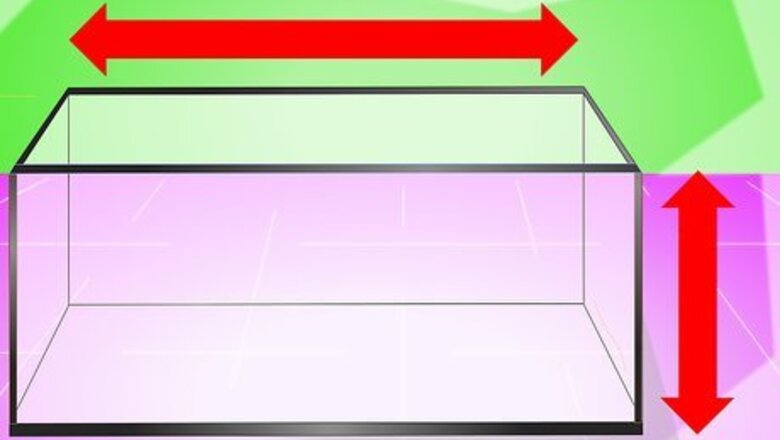
views
Choosing and Equipping a Goldfish Tank
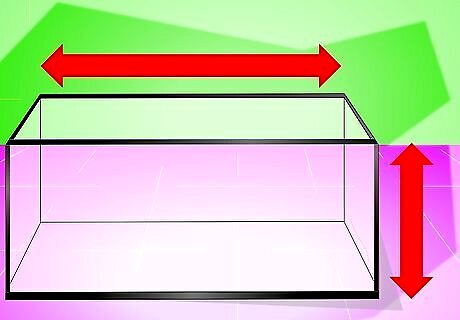
Consider the size of your fish tank. Goldfish require particularly roomy living arrangements in order to stay healthy. While they are pretty small fish, they need larger tanks than you might expect. You can do better than a bowl. Despite the beauty of a goldfish suspended in a sphere of glass, most fishbowls simply don’t provide enough room for their occupants. A single fancy goldfish can be kept in a 10 gallon (37.9 L) tank, but bigger goldfish like comets need a tank of around 50 gallons (189.3 L). If you like to add more goldfish to your tank, you’re going to need to increase the capacity of your fish tank by roughly 10 gallon (37.9 L) for each additional fish. A 20 gallon (75.7 L) is ideal for your first goldfish and can ultimately hold 2 fancy goldfish.
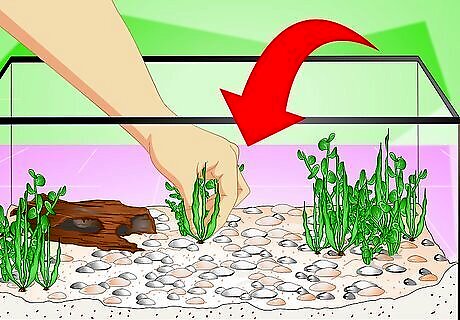
Decorate your fish tank. Most goldfish favor a palace or castle ambiance. Shoot for somewhere in between. Gravel is a must, and plants are recommended. In this range, follow these guidelines for your selection of décor, gravel, and plants: Choose a goldfish-appropriate gravel. Goldfish are scavengers, and they will pick up pieces of gravel and mess around with them just for fun. If the pieces of gravel are too small, your goldfish nay accidentally swallow them. To prevent that, use gravel that is made up of pieces that are too large for the fish to swallow. Objects such as rocks, caves, and plants will give your goldfish an opportunity to play around and investigate. Consider adding some to your tank. Don’t use wood. Though it looks spectacular, it will color your water and, depending on the type of wood, will dissolve. Be aware that some rocks and sea shells will affect the pH of the water. If you’re adding stuff you find on the beach willy-nilly, you need to check your tank's pH frequently. Only put certain plants in your goldfish tank. Goldfish, interestingly, are pretty aggressive with plants. Some plants are better able to defend themselves: Try Vallisneria types, different Hygrophilas, Red Bacopa or even Ludwigia Arcuata.
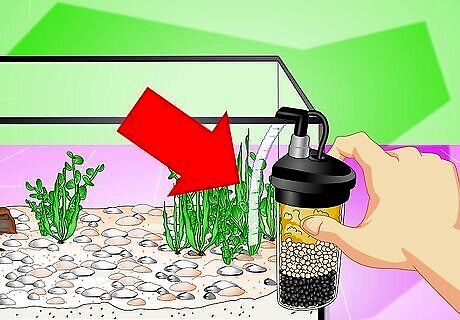
Use a filtration system. A filter is an absolutely necessary component of your fish tank. Filters operate according to flow rate, with certain filters designed for certain sized tanks, so make sure you get the right filter for a tank your size. There are two types to choose from. External filters rest on the exterior of your tank, while internal filters are submerged within the tank. Either type of filter can work for a goldfish tank. External filters are generally considered to be superior, as they have a greater capacity to store filtration materials and can accordingly clean water more thoroughly. . If you have a 20 gallon (75.7 L) tank, shoot for a filter rated for 40 gallons (151.4 L).
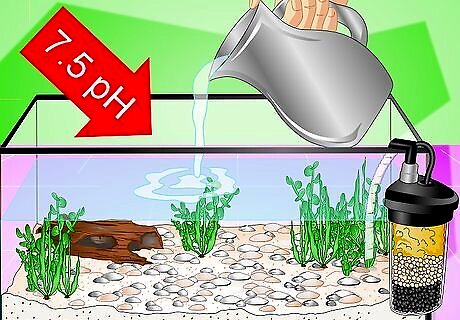
Add conditioned water. You can use tap water to fill your tank, but you need to add conditioner to make it safe for your goldfish. At minimum, you need a conditioner that neutralizes chlorine and chloramine. Aside from removing any harmful chemicals in tap water with conditioner, you’ll also need to make sure the water has the right pH level for gold fish, which is a slightly alkaline 7-7.5, ideally 7.2 pH. Use a pH test kit to periodically test your water, and adjust the pH if necessary. Take tank placement seriously. Do not place the tank near a window or any heating or cooling source. Do not allow sunlight to hit the tank directly. Also be sure the tank is set on something flat and extremely sturdy. You likely don’t need a heater. The fish tank’s water temperature should be between 60 °F (16 °C) and 72 °F (22 °C), so the ambient temperature of your living space should work.
Cycling Your Fish Tank’s Water

Allow the water to acquire healthy bacteria before adding fish. When you first set up your fish tank, you’re going to need to let the water sit for at least a few weeks before showing the place to any prospective goldfish occupants. This time is necessary to help build up beneficial bacteria, a process outlined in this section. Be patient during this process!
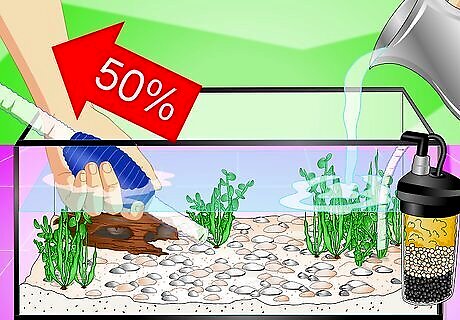
Change the tank’s water once a week. Let’s face it: goldfish poop a lot. And they hate swimming around in their own poop. You would too. Their poop will build up dramatically in your fish tank’s water (even with plenty of water changes), which will both enrage and sicken your goldfish. To curb this buildup, change 25-50% of the tank’s water once a week. When changing some of the tank’s water, rinse the filter and any tank décor with water your remove from the tank. Never use tap water. Healthy bacteria that you want to preserve live on and in these items. Only add clean water that you’ve treated with conditioner.

Cycle the fish tank’s water once a month. You also need to regularly cycle the fish tank, which means changing 100% of the tank’s water. The goal in cycling your fish tank is to allow it to rebuild colonies of helpful bacteria, which collect mostly on the filter and in the gravel. These bacteria help your water cycle nitrogen, which is necessary to keep your fish alive. Once your tank is setup and ready to go, with the filter running, add ammonia. Continue adding ammonia until enough bacteria have developed to eat both the ammonia and nitrites in your tank. There are various forms of ammonia, which is most readily available in bottled form. Follow the directions on the bottle. Determine your levels of ammonia, nitrites, and nitrates by using test kits designed for this purpose. Maintain the process until you get readings that indicate zero ammonia and zero nitrite. Once you also find a bit of nitrate in the water (which is produced by the bacteria), your tank has been successfully cycled.
Introducing Goldfish to Their New Home

Select your fish tank’s occupant. Look for a healthy, handsome fish. Don’t choose a fish from an aquarium in which there are also sickly or dead fish. You want a fish that looks like they’re aware of their surroundings, actively moves around, nibbles on stuff, and generally acts like a boss. Gaze into the fish’s eyes. Seriously. Goldfish eyes should be clear, not foggy. Check out the fish’s fins and body. You want erect, non-ragged fins on your fish. Saggy or messed up fins often indicate ill health. Similarly, don’t choose a fish with white spots, fuzzy patches, or red streaks. Once the match has been made, get your fish into a plastic bag filled with water from the tank from which it came. Place the plastic bag inside a paper bag so the journey to its new home will not traumatize it.
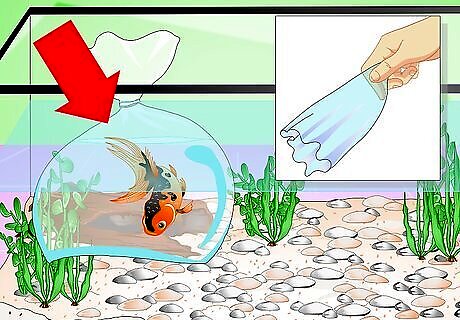
Show the fish its new home. But don’t hurry the process. Float the bag for fifteen minutes or so in your tank to let the fish slowly acclimate to any temperature difference. At about the five minute mark, allow some of the tanks water into the bag, but don’t let any of the bagged water into the tank. Do not pour the fish and the bagged water into your tank. Instead, gently scoop the fish out of the bag with a net and submerge the net in the tank slowly, letting the fish swim out of the net on its own. Turn off the lights and leave the room. Give your new goldfish some peace and quiet to encounter their new living space. Add a fish tank additive called stress coat to the water to minimize the chances of your fish becoming ill from the change in environment.

Feed your goldfish like it’s your only friend. There are a lot of different options. Get whichever you want; Preparation is more important. If the food is dry (most goldfish food is), soak it in water from the tank for a minute before feeding your fish. Un-soaked food can injure or sicken the fish when it expands in the stomach. Fish food should sink, or be suspended in the water. Food that floats risks giving the fish swim bladder issues. Feed your fish once a day, six days a week. On the seventh day, your gold fish needs to rest. Make sure not to feed to much; too much can lead to ammonia, while to less will starve your fish.

















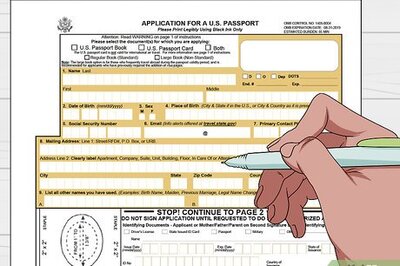


Comments
0 comment